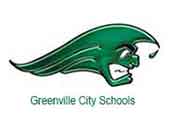|

 |
Greenville City Schools
The RTI (Response to Intervention) process and its benefits
By Clayton Westerbeck, GHS Assistant Principal
The RTI (Response to Intervention) program is a program designed to
identify at risk students grades K-12 who are struggling in school
academically or behaviorally. Progress of these students is monitored,
research-based interventions are applied and the frequency/intensity of
these interventions are adjusted, as needed. If data is collected and
interventions are provided, students with learning disabilities or
other impairments are identified and can be moved to other appropriate
programs and plans to fit their needs. Students are placed into three
tiers based on the severity of their needs.
Tier I- This tier consists of universal strategies, high quality core
curriculum, research-based strategies and school wide screening to
identify students at risk and the design is within their regular
education classes.
Tier II-The second tier consists of instructional modifications and
assessments that are developed for students who do not respond to Tier
I strategies. The educational environment is evaluated along with the
students’ skills. Specific interventions are designed and delivered,
often times in a small group setting. Progress is measured frequently.
Tier III- This tier is designed for students who have not responded to
the interventions already in place. Interventions at this level are
further specialized and individualized. Students at this level may be
further evaluated for special education services. Part of the
assessment for this is the RTI data collected during Tiers 1-3.
At all three tiers the school must take into account the interventions
that have been implemented, as well as the cultural backgrounds for
students. Cultural backgrounds, for example, can have an impact on
implementation of support structures such as in the case of English
language learners. These conversations would include school
psychologists, special education specialists and curriculum
specialists. When problems are identified early, implementations can
support the student and allow the school to meet the individual student
learning needs.
Some schools offer various programs such as tutoring programs, pull out
programs that allow for small group instruction or even less effective
options, such as grade retention. If a student has spent time cycling
through each tier within the RTI program with little or no improvement,
then they would be assessed by a team of educational professionals to
see if the student qualifies for special education services. The RTI
program is a research- based intervention system that thrives on
communication and collaboration within the school. Data on each
students’ successes and failures must be tracked with supports put in
place, as needed, for the student to grow academically.
Parent involvement within the program is paramount in reinforcing
academic and behavioral interventions. Keep in mind that different age
groups of students will require a different approach as far as
strategies and needs. Elementary RTI increases the accountability for
outcomes of identifying and circumventing risk for academic failure. At
the Middle and High School level, the focus is on monitoring response
to intervention to determine when academic benchmarks are made so that
the student can be transitioned down the RTI pyramid. RTI is another
tool to identify, monitor and teach our students of all ages who have
difficulty in school, how to be successful.
|
|
|
|

